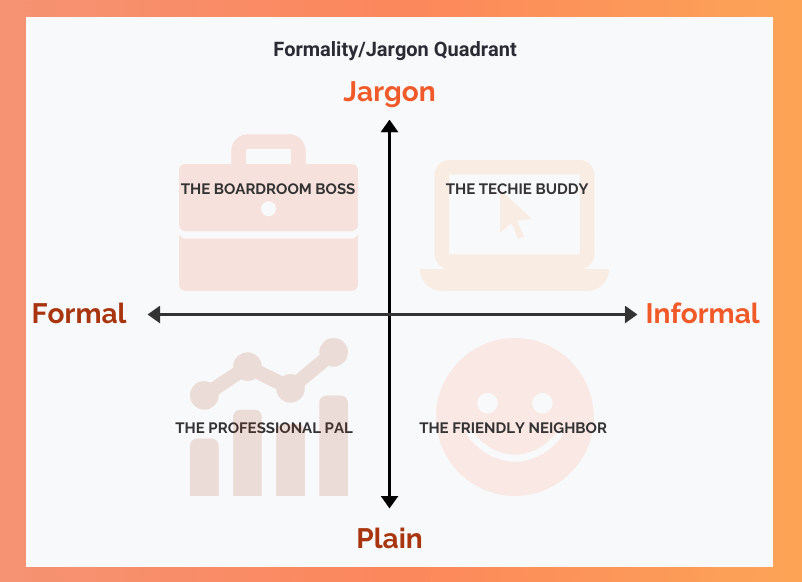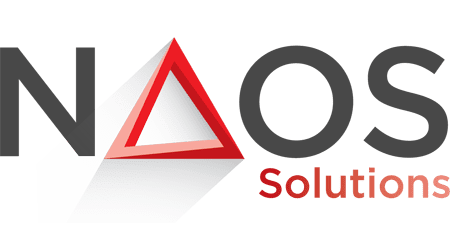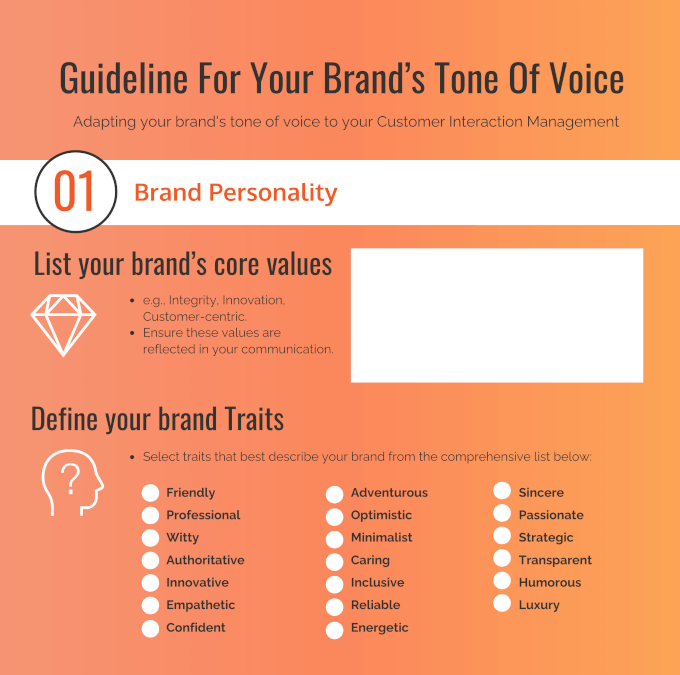Are you looking to ensure your Customer Service Provider perfectly aligns with your brand’s tone of voice? This article will guide you through the essential steps to achieve that, helping you build stronger customer relationships and boost loyalty.
How your customer service team communicates in today’s competitive market can make or break your brand. Our CX blog provides expert insights and practical tips to help you maintain a consistent and engaging brand voice across all customer interactions.
 u
u
By the end of this guide, you’ll know how to confidently align your customer service provider with your brand’s unique tone, creating a seamless and satisfying customer experience.
🌟 Plus, as a special bonus, we’re offering a downloadable tone-of-voice guideline 📄 that you can personalize for your brand—an essential tool to ensure seamless alignment with your outsourcer.
UNDERSTANDING YOUR BRAND’S TONE OF VOICE
Have you ever ended a customer service call feeling like you just spoke to a robot reading from a script? Research shows that this is a frustrating experience and a killer of loyalty.
A study by PWC revealed that 73% of customers say the experience is the most influential factor in their buying decisions. This shows them how well the company understands their needs, and this is where your brand’s tone of voice comes in.
Why Is It Important To Consider The Brand’s Tone Of Voice?
Your brand’s tone is the personality that shines through in your communications, and customer service interactions are no exception. It’s not just about what you say but how you say it.
Here’s why it matters:
- Building Relationships: Think of your favorite local coffee shop. The barista knows your order, greets you by name, and asks about your day. That’s the power of a relatable tone. When your Customer Service Provider uses a tone that aligns with your brand, it improves trust and builds stronger customer relationships.
- Differentiation: A unique brand voice can set you apart and make customer service interactions more memorable.
- Clarity and Connection: A consistent tone of voice across all touchpoints creates a clear and cohesive brand image. The sense of familiarity boosts your revenue since 80% of customers purchase items from the brands they recognize.

The Power of Consistency Across Customer Experience
According to Albert Mehrabian’s communication model, tone of voice (38%) and body language (55%) play a significant role in conveying emotions in a face-to-face conversation, overshadowing the actual words (7%). Thus, 93% of a message is conveyed by tone of voice and body language.
In customer service contexts—whether emails, chat, social media, or phone—tone of voice is crucial for building trust and satisfaction. The challenge for your brand will be to identify a clear tone of voice and find the right balance to maintain it across the different customer service channels.
Zappos, the online shoe retailer, is the perfect example of a company that successfully aligns its customer service with its brand. Their core value is “delivering happiness,” which is reflected in every customer service interaction.
Their service reps are known for being friendly, helpful, and willing to go the extra mile. They’re empowered to spend as much time as needed to make each customer happy. The company holds the record for the longest customer service call at over 10 hours.
That’s precisely why 75% of their purchases come from returning customers, and 44% of new customers heard about the company through word-of-mouth.
Adapting Your Brand’s Tone of Voice To Customer Interaction Management
The critical components of a brand’s tone of voice include:
Language
The words you choose should reflect your brand personality. To get a refined language adapted to your brand, you will have to define:
- The level of formality:
- Formal: Professional, authoritative, sophisticated, precise.
- Informal: Casual, friendly, relaxed, conversational.
- Industry Jargon:
Decide whether or not to use industry-specific terms. Jargon can establish credibility but may alienate some customers. Strive for clarity.
To visualize how language can vary, we can use a double-axis chart:

| THE BOARDROOM BOSS 💼
(Formal + Jargon) Example: “Our API integration has encountered a latency issue. We’ll initiate a comprehensive diagnostic protocol to resolve the anomaly and restore optimal functionality.” |
THE TECHIE BUDDY 👨💻
(Informal + Jargon) Example: “Hey there! Looks like the API is lagging a bit. We’ll run a full diagnostic to sort it out and get things back on track.” |
| THE PROFESSIONAL PAL 📊
(Formal + Plain) Example: “We’ve identified a delay in the API integration. Our team will perform a thorough diagnostic to fix the issue and ensure everything runs smoothly.” |
THE FRIENDLY NEIGHBOR 😊
(Informal + Plain) Example: “Hi! We’ve noticed a delay with the API. Our team will check it out and fix it so everything works perfectly again.” |
In addition to the Language Chart Quadrant, brands want to include those elements of language for their customer service:
- Positivity:
Positive language can enhance customer satisfaction and loyalty. Studies in marketing psychology show that customers respond better to brands that communicate positively and empathetically.
- Empathy:
Empathy is a crucial element in brand tone, especially in customer service. Using empathetic language can make customers feel understood and valued, increasing satisfaction and loyalty.
➕ Ensure everyone in customer service uses empathetic language that acknowledges the customer’s feelings and experiences.
Example: “We’re happy to assist you and ensure you have a great experience.“
➖ Refrains from using critical, discouraging, and pessimistic words.
Example: Instead of “That’s not possible,” use “Let’s explore a different approach.“
- Cultural Sensitivity (Inclusive vs. Exclusive):
➕ Ensure your language is considerate of diverse audiences.
➖ Eliminate the vocabulary used that might alienate certain groups.
Style
Playful and humorous? Serious and authoritative? The communication style should reflect how you want to represent your brand and who your ideal customer is. Key elements include:
- Sentence Structure:
Depending on your audience, you can choose between short, simple sentences or longer, more complex ones.
Ex. short phrases: “Our team is here to help.“
Ex. long phrases: “Our dedicated team of experts is available 24/7 to assist you with any inquiries you may have regarding our comprehensive suite of services.“
- Punctuation:
Convey tone through punctuation (e.g., exclamation marks for excitement) and judicious use of emojis.

- Grammar and Syntax:
Ensure grammatical rules and sentence construction are consistent to maintain professionalism.
Personality
Your customer service should infuse your brand’s personality into every interaction.
- Brand Traits:
Define the characteristics that define your brand (e.g., friendly, professional, witty).
Friendly: Warm, welcoming, approachable, and kind.
Ex.: “We’re here to help you every step of the way!“
Authoritative: Commanding, knowledgeable, serious.
Ex.: “Our team is committed to delivering exceptional service.“
However, many more possible brand traits exist beyond the two mentioned above. Here’s a more comprehensive list of brand traits to consider when defining your brand’s tone of voice for customer service:
-
- Professional: Reliable, trustworthy, competent, formal.
- Witty: Clever, humorous, sharp, playful.
- Innovative: Creative, cutting-edge, forward-thinking.
- Confident: Assured, self-reliant, poised, assertive.
- Reliable: Dependable, consistent, steadfast, trustworthy.
- Energetic: Vibrant, lively, enthusiastic, dynamic.
- Sincere: Genuine, honest, heartfelt, authentic.
- Luxury: High-end, sophisticated, exclusive, premium.
- Adventurous: Bold, daring, risk-taking, explorative.
- Optimistic: Positive, hopeful, upbeat, cheerful.
- Minimalist: Simple, clean, uncluttered, straightforward.
- Caring: Nurturing, supportive, protective, considerate.
- Passionate: Zealous, fervent, devoted, intense.
- Strategic: Calculated, methodical, analytical, planned.
- Transparent: Open, honest, clear, straightforward.
- Humorous: Funny, amusing, entertaining, light-hearted.
- Emotional Tone:
Should your brand’s emotional undertone be empathetic?
For example, it could be understanding, compassionate, caring, and sensitive, or should it be neutral? I.e., detached, impartial, objective.
- Engagement Level (Engaging vs. Dry): Measure how engaging or interactive the language is, assessing if it invites dialogue or feels monologic.
➕ You want your brand to be perceived as engaging, interactive, inviting, lively, and dynamic. Ex: “We’re excited to help you with your new project. Let’s get started together!“
➖ Conversely, you should avoid being perceived as dry, monologic, flat, uninteresting, and uninspiring.
Ex: “You need to complete the onboarding process. Please follow the required protocols.“
COMMUNICATING YOUR BRAND’S TONE TO YOUR CUSTOMER SERVICE PROVIDER
So, you’ve nailed down your brand’s unique tone of voice that resonates with your target audience and sets you apart. But the job still needs to be done. The next crucial step is ensuring your Customer Service Provider understands and embodies that tone in customer interaction management.

Step #1: Provide clear guidelines to the outsourcer.
Imagine a customer reaching out to your brand with a question. They land on a chat window expecting a friendly, helpful conversation, only to be met with robotic responses and technical jargon. Talk about a disconnect!
The first step in avoiding that scenario is creating clear guidelines for your Customer Service outsourcer. This document acts as a guide, outlining the specific language, style, and personality you want them to convey.
Here’s what to include in your guide.
- A clear definition of your brand’s voice, core values, and the personality you want to project.
- Words and phrases you want to emphasize and jargon to avoid.
- Examples of customer inquiries and demonstrate how a representative should respond using your brand’s tone.
- Examples of responses that don’t align with your brand voice.
Step #2: Offer training programs.
A comprehensive tone-of-voice guide is only the first step. Equipping your Customer Service Provider with the skills to embody it correctly is just as important. Offer training programs that go beyond simply reading scripts – here are some strategies to consider:
- Interactive Role-Playing: Create realistic customer service scenarios where reps can practice using your brand’s tone in a safe and supportive environment.
- Voice and Style Coaching: Bring a communication specialist to guide everyone on vocal delivery and style that aligns with your brand personality.
- Ongoing Feedback and Monitoring: Monitor customer interactions and provide feedback through call reviews, chat transcripts, and customer satisfaction surveys.
ADAPTING YOUR BRAND’S TONE OF VOICE ACROSS THE CHANNELS
A robotic and monotone customer service voice can be a brand’s downfall, even if it delivers top-notch products. This disconnect can damage customer experience and trust. While your brand voice should remain consistent, the tone might need subtle adjustments to fit each platform.
Phone Calls 📞
Maintaining a professional yet friendly tone is crucial for phone interactions. Without visual cues, the customer’s perception relies entirely on the representative’s voice. Clear, empathetic communication can help build trust and resolve issues effectively. Encourage representatives to smile while talking, as it naturally conveys warmth and friendliness in their tone.
Emails 📧
Email communication allows for a slightly more formal tone than phone calls but can still be personalized. Use clear, concise language to avoid misunderstandings. Proper punctuation and sentence structure are vital to ensuring professionalism. A touch of friendliness can be added through polite greetings and sign-offs, maintaining a balance between formal and approachable.
Chats 💬
Real-time chat interactions require efficiency and warmth. The tone should be clear and helpful, avoiding jargon. Emojis and punctuation can convey friendliness and empathy without sacrificing clarity. Quick, polite responses are essential to keeping the conversation engaging and customer-focused.
Social Media 📣
Social media is your chance to showcase your brand’s personality. Use a more conversational tone; don’t be afraid to incorporate humor if it aligns with your brand voice. Timeliness is critical; respond quickly to comments and inquiries to show that you value customer engagement. Remember to keep the communication public-friendly, maintaining a positive and inviting presence.
By adapting your tone of voice to fit each channel, you ensure your brand remains consistent yet flexible, enhancing overall customer satisfaction and trust. This approach helps create a seamless and enjoyable customer experience across all touchpoints.
MONITORING AND EVALUATING THE TONE-OF-VOICE ALIGNMENT
Maintaining a consistent brand tone of voice in customer service is an ongoing process. It requires continuous monitoring, evaluation, and refinement to ensure your customer service provider stays aligned with your brand’s evolving identity and customer expectations.
Here’s how to stay on top of your CSP’s brand voice alignment:
Defining Performance Metrics
Establishing clear performance metrics is the first step in ensuring alignment with your brand’s tone. The Tone Consistency Score is a crucial metric to evaluate how consistently the CSP maintains the desired tone across interactions.
This score considers various aspects such as formality, positivity, empathy, and alignment with brand guidelines. The Quality Assurance (QA) team is responsible for implementing this scoring system and regularly assessing its outcomes. Their job goes beyond checking for accuracy. They are on the frontline to protect your brand voice above any other consideration.
Call Sentiment Analysis is another vital tool. It utilizes speech analytics to evaluate the emotional tone of customer service calls. It can be done manually or with AI tools such as IBM Watson Tone Analyzer (for text only), CallMiner, Tethr, or Outreach. Positive sentiment scores indicate that the CSP aligns well with your brand voice, while negative scores highlight areas for improvement. The QA team oversees this analysis to ensure accurate and actionable insights.
Lastly, Customer Satisfaction Scores track and correlate overall customer satisfaction with tone consistency. High satisfaction often aligns with an effective tone, indicating that the CSP meets brand expectations. As the outsourcing party, you should monitor and integrate these scores into performance evaluations.
Monitoring and Evaluation
Once performance metrics are defined, the focus shifts to regular monitoring and evaluation. The QA team plays a pivotal role in this phase by screening calls and reviewing interactions. Regularly reviewing recorded calls and chat transcripts helps assess whether the CSP maintains the desired tone.
The QA team conducts periodic employee evaluations using a standardized checklist to measure tone consistency, empathy, clarity, and adherence to brand guidelines. These evaluations are essential for reinforcing strengths and addressing weaknesses.
Additionally, peer monitoring, encouraged by the training team, involves team members assessing each other’s calls. This practice provides diverse perspectives and fosters a culture of continuous improvement.
Customer feedback is another critical component of the monitoring process. Implementing regular customer satisfaction surveys allows you to gather insights focused on communication quality. Customers rate their experience and provide open-ended feedback on the tone and helpfulness of the service.
Social media monitoring, also managed by you, the outsourcing party, tracks mentions of your brand to gauge customer sentiment. Analyzing comments helps identify trends related to tone and informs necessary adjustments. Direct feedback channels provide immediate insights after customer interactions, enabling swift responses to identified issues.
Training and Development
Training and development are crucial for ensuring that the CSP embodies your brand’s tone in customer interactions. The CSP training team is responsible for offering continuous training programs that include regular sessions to update the CSP on any changes in brand tone guidelines. Role-playing scenarios are an effective method for practicing the desired tone in various situations.

Workshops and seminars conducted by the CSP training team focus on communication skills, empathy, and cultural sensitivity. Inviting experts to these sessions can provide fresh insights and advanced techniques, reinforcing positive behaviors. Additionally, integrating feedback from monitoring and customer feedback into targeted training programs ensures that specific issues are addressed effectively.
Iterative Refinement
Maintaining alignment with your brand’s tone requires iterative refinement. You should schedule regular check-ins with the outsourcer to review performance, discuss feedback, and adjust strategies as needed. This dynamic approach keeps the alignment process responsive to customer expectations and brand evolution changes.
It is essential to establish a feedback loop where CSPs can share their experiences and challenges. The CSP training team facilitates this two-way communication, leading to innovative solutions and stronger adherence to the brand tone. Regularly updating the tone of voice guidelines based on new insights and customer feedback ensures the client can communicate and integrate these updates into training materials.
By integrating these strategies, you can ensure your CSP consistently embodies your brand’s tone of voice, enhancing customer satisfaction and loyalty. Continuous monitoring, training, and refinement are vital to maintaining a strong, cohesive brand identity across all customer interactions.
Conclusion
Now that you’ve read our guide, you can hire a call center and help them align their reps with your brand’s tone of voice. Luckily, you don’t have to look too far – NAOS Solutions is a trusted customer service provider that’ll help you create a loyal customer base through a consistent brand voice. Contact us today.



2 comments
Pingback: Contact Center Best Practices: From Good to Great CX | CX Blog
Pingback: Outsourced Call Center: Challenges & Opportunities | CX Blog
Comments are closed.